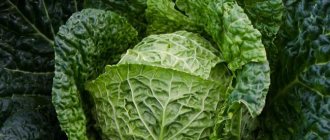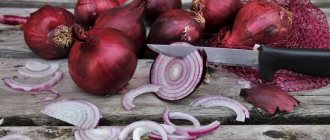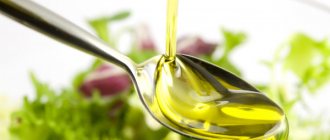What dishes should you add cardamom to?
This aromatic spice can be found in a wide variety of soups, including pea, bean, lentil and bean soups. In addition, it is ideal for dishes with rice and potatoes. It is added to fruits, vegetables and nuts.
In drinks, cardamom is used as an infusion (without boiling) and milk decoction. This seasoning is also found in liqueurs such as Chartreuse and Curacao. In addition, it is often added to jelly, compotes, coffee and tea.
In the dessert menu, the fruits in question are used as a component for pilafs and sweet milk porridges, cookies, cakes, gingerbreads, pastries, muffins, mousses and halva.
Where is sumac added?
Sumac is almost universal and has found its successful use in different cultures - from cooking to canning.
Among the common oriental seasonings, sumac is one of the top five. Thus, in Iran and Turkey it is customary to sprinkle ground sumac on rice snacks, and in Egypt, Syria and Lebanon, red berries are brewed and the resulting broth is used to season meat and vegetable dishes.
Botanical researcher John Gerard, originally from England, described sumac back in 1597 as an excellent addition to sauces with meat, after which any discomfort in the stomach disappears.
Sumac seasoning is used in the preparation of meat and vegetable dishes, added to salads, marinades and sauces.
Sumac can be found in salads and marinades; it goes well with fish or poultry, and is often added to dishes that use beans and cereals. To spice up pea soups or hummus (an oriental snack made from chickpea puree), add a little sumac.
Another interesting dish that requires sumak is a sauce made from yogurt or kefir, which traditionally accompanies meat cooked on the grill.
Pork chops or lamb cutlets will get an unusual kick if you season them with sumac and cumin or ground black pepper. Sometimes, to make it more appetizing and tasty, kebab or pieces of pita bread are dipped directly into a bowl of spice.
Not a single lula kebab, shawarma or shish kebab can do without cilantro and onion rings, generously sprinkled with burgundy spice. Marinated meats and barbecue steaks are generously seasoned with sumac before grilling.
The applications of ruby spice do not end there, and sumac can be found in sausages, various fillings and minced meats, cheeses and even drinks or desserts. Lovers of unusual tastes and culinary experiments confidently add sumac to light breakfasts such as sandwiches.
One of the advantages of sumac is its compatibility with most seasonings, such as sesame, thyme, nutmeg, coriander, hot pepper, cumin, cloves and others.
Today, sumak is widely used in the preparation of pilaf, boiled potatoes and bean soups. Fans of smoked lard will certainly enjoy the new taste of the delicacy combined with a slice of black bread and sumac.
You will find everything that is important to know about cardamom: beneficial properties and contraindications in this article. Read what cumin is and where it is used here.
Cardamom in cooking - the best recipes
Royal spice is one of the most popular food additives in Eastern countries. It is part of many spicy mixtures, and in some countries it is mixed with crushed salt and added to almost all dishes.
Cooking is the most popular area where cardamom is used. After all, this plant is an unusual spice, thanks to which it is possible to improve the taste of almost any dish. The seasoning gives food a spicy, slightly hot taste and an alluring aroma.
The spice is added to soups, salads, baked goods, confectionery, desserts, sauces and even hot drinks. For example, in India and Saudi Arabia they prepare coffee with cardamom. The plant is also often added to tea and even milk.
This spice is widely used in the preparation of first and second courses, desserts, all kinds of baked goods, and added to drinks. Cardamom does not lose its taste during cooking.
Cardamom is a spice with a rich, dense aroma. Therefore, you need to add spice to dishes in small quantities. As a rule, for most dishes no more than 0.5 g of this seasoning will be sufficient, and for first courses and drinks - about 0.3 g per 1 liter. Otherwise, it will “overwhelm” the taste of other ingredients, ruining the taste of the dish.
Tomato soup with mango and cardamom is a delicious dish with which you can surprise your guests.
Soups with cardamom
As mentioned earlier, in European cuisines cardamom is most often added to first courses. Bean-based soups with the addition of this spice acquire a sweetish taste.
Pea soup with ginger and cardamom
To prepare the dish you will need:
- 0.5 kg of peas;
- onion head;
- one carrot;
- 20 g ginger root;
- butter to taste;
- cardamom.
Peas should be soaked in water for 9-12 hours. Then change the water and put it on fire. Grind the carrots and ginger root on a coarse grater, cut the onion into half rings. Then fry the vegetable ingredients in a frying pan.
When the peas become soft, add the fried vegetables and ground cardamom seeds (on the tip of a knife). 5-10 minutes before the peas are completely ready, add a piece of butter to the dish.
Tomato soup with cardamom
- 0.5 kg tomato;
- 2 mangos;
- 2 small zucchini;
- a piece of butter;
- 2 tbsp. tomato paste;
- a teaspoon of ground cardamom;
- a pinch of sugar and black pepper;
- salt to taste.
Cooking steps:
- Remove the skins from the tomatoes and cut into cubes.
- Peel the mango, remove the pit and chop finely.
- Peel the zucchini and cut into small slices.
- Melt the butter in a saucepan and add the tomatoes and mangoes and simmer lightly.
- Season with tomato paste, add zucchini. Simmer over low heat for 8-9 minutes.
- Season with cardamom, pepper and add sugar.
Without this spice, it is impossible to imagine such dishes and drinks as Indian Tikka Masala and Bedouin coffee.
Pea soup
Soup is the head of everything. Try experimenting and make pureed pea soup with cardamom. These two ingredients go well together. You will need:
- one and a half kilograms of green peas (frozen is also suitable);
- young carrots – 3 pcs.;
- butter;
- cream 25% - 150 ml;
- basil - to taste;
- black pepper;
- a pinch of ground cardamom;
- spoon of sugar.
First of all, peel and coarsely chop the carrots. Melt the butter in a saucepan and simmer the carrots. In another saucepan (3-4 liters), boil water, put the peas in it and cook for 10 minutes. While the peas are cooking, whip the cream. After 10 minutes, drain some of the water and puree the peas. Then season the resulting puree with cream, add spices, salt and pepper. You can add sugar to taste. Transfer the carrots to the soup (you can also puree them if you wish). Sprinkle with basil.
Second courses - pilaf and pork with cardamom
World chefs and confectioners have argued for a long time about what dishes cardamom, a seasoning, harmonizes with, where to add it and what spices to combine it with. But their opinions were divided and often depended on the characteristics of the national cuisine.
But first of all, do not forget about the homeland of the spice. It is in the dishes of Indian, Chinese and Arabic cuisines that it reveals itself at its best. One of these dishes is Indian sweet pilaf.
For pilaf you will need the following ingredients:
- 400 g rice;
- dried apricots and prunes (60 grams each);
- vegetable oil 100 ml;
- sugar and salt to taste;
- cardamom and other spices (cinnamon, saffron, cloves) to taste.
Heat oil in a cauldron and add rice there. Frying is done until golden brown. Next, add dried fruits, add cardamom, spices and fry for another 6 minutes. Then add water so that its level is 2-3 cm higher than the rice and simmer over high heat.
After the water has evaporated to the level of the rice, the flame is reduced and the dish is simmered until fully cooked with the lid closed.
Pork with cardamom
This dish diversifies the daily menu well. The ingredients you will need:
- pork – 0.5 kg;
- cardamom - half a teaspoon;
- cloves - 2 pieces;
- garlic – 2-3 cloves;
- vegetable oil;
- greens - for decoration (basil, cilantro).
First, prepare the marinade: crush garlic and spices in a mortar. A little oil is added. Next, the meat is cut into small pieces and beaten. Place in the marinade for 2-3 hours, then fry in oil.
For the first couple of minutes, the pieces are fried over high heat, then the flame decreases and the meat is kept on the fire for another quarter of an hour. After frying is finished, the meat is sprinkled with herbs.
The spice goes well with vegetables; it can be added when baking, frying or stewing them.
Vegetable dishes
Vegetarian dishes cannot be imagined without spices. Cardamom is perfect for these purposes, because it goes well with vegetables, enriching dishes with a unique spicy taste.
One of the options for a tasty and healthy vegetable dish is ratatouille with cardamom.
To prepare you will need:
- yellow and red bell peppers – 2 pieces each;
- eggplants – 0.5 kg;
- zucchini – 1 pc.;
- tomatoes – 2-3 pcs.;
- a pinch of oregano and basil to taste;
- garlic – 1 clove;
- cardamom - half a teaspoon.
Prepare the vegetables: peel the pepper and cut into small pieces, eggplant and zucchini into rings, tomatoes into cubes. Place zucchini and eggplant in the deep fryer bowl, add chopped garlic and cook for 5-7 minutes in olive oil.
Next, add cardamom seeds, tomatoes and pepper to the dish. Mix the ingredients and cook for another 10-15 minutes. Garnish the finished dish with oregano and/or basil (preferably fresh).
Corn salad with cardamom
- can of canned corn;
- one onion;
- green onions – 50 g;
- cucumber and apple - each;
- sunflower and olive oil - 2 tbsp each.
- cardamom – ½ tsp;
- salt, pepper to taste.
Cooking process:
- The apples are peeled and finely grated. Onions and cucumbers are finely chopped.
- Heat the oil in a frying pan, add the onion and fry it.
- All ingredients are placed in a salad bowl, supplemented with spices and oils.
- Everything is thoroughly mixed.
The best taste and aromatic qualities of the spice are revealed in desserts and drinks.
Pumpkin with cardamom
Vegetarians or simply lovers of vegetable dishes will surely appreciate this simple recipe. You'll need:
- one small pumpkin
- olive oil;
- lemon juice;
- cardamom;
- parsley;
- cilantro;
- black pepper;
- salt.
Method of preparation: Grind the cardamom and mix all the seasonings with lemon juice, parsley and olive oil. Rub the resulting mixture onto the pumpkin, after cutting it into large pieces. Bake the pumpkin in the oven for about half an hour at 200°C.
Pollock on a vegetable bed with spices
This simple dish, combined with spices, will add zest to your daily diet. It’s not difficult to prepare, try it!
Ingredients:
- pollock - 600-800 gr.;
- cauliflower - 400 gr. (you can take frozen);
- green beans - 300 gr. (you can take frozen);
- onion - 1 pc.;
- vegetable or olive oil - 5 tbsp. l.;
- thyme - 1 tsp;
- ground cardamom - 1/2 tsp;
- salt, pepper and lemon juice - to taste.
Cooking method:
Pre-defrost the pollock and drain off excess water. Then marinate the fish for 30 minutes. As a marinade, use a mixture of oil, thyme, cardamom, salt, pepper and lemon juice. While the fish is marinating, take care of the vegetables. Frozen vegetables do not need to be defrosted. Place the vegetables in a baking dish, season with salt and pepper, and drizzle with 1 tablespoon. oils Place the onion sliced into rings on the vegetables and add a little oil again. Place fish with marinade on a vegetable bed. Cover the pan with foil and place in the oven preheated to 180°C for 30-40 minutes. After this time, remove the foil and leave the fish to bake for another 15 minutes. Before serving, decorate the dish with fresh herbs.
Cardamom buns
Sweet buns are a traditional Swedish pastry.
To prepare the dough you will need:
- wheat flour -3 dl;
- milk - 2 dl;
- cane sugar - 7 tbsp;
- butter - 75 g • yeast;
- salt - tsp;
- ground cardamom - 1 g.
For filling:
- butter - 60 g;
- cane sugar - 60 g;
- ground cardamom or crushed grains - 1 tsp.
Knead the dough from these ingredients and leave for 2 hours. After the dough has risen, roll it into a thin layer and distribute the filling. Form buns and bake in the oven for 20 minutes at 220 degrees.
Hot sandwiches with cardamom
This recipe is perfect for a leisurely Sunday breakfast or for decorating a snack table. We suggest making hot sandwiches with eggplants and tomatoes. When the vegetables are slightly baked, sprinkle grated cheese and pepper on top. Next, add a pinch of cardamom, thanks to which this dish will no longer be banal.
Garnish hot sandwiches with freshly chopped herbs.
Baking and desserts with cardamom
A pinch of ground cardamom seeds can add a delicious aroma to the dessert. The spice is in harmony with cookies and gingerbread, baked pies.
Wafer rolls
- butter – 200 g;
- sugar – 400 g;
- eggs – 5 pieces;
- wheat flour – 1 cup;
- baking powder – 10 g;
- cream – 250 ml;
- cardamom and vanilla - 0.5 tsp each.
Beat eggs with 200 g of sugar in a bowl. Add melted butter, cardamom, baking powder, vanilla and flour. Everything is mixed well. The finished dough is poured into the waffle iron and baked for about a minute. Next, tubes are formed.
For the cream, whip the cream with the remaining sugar. The tubes are filled with the prepared cream. Sprinkle with powdered sugar on top.
Children will love these fragrant spicy cookies.
Sweet rice pudding
To prepare the pudding you will need the following ingredients:
- 100 g rice;
- 1 liter of milk;
- 8 tablespoons sugar;
- 4 pieces of cardamom;
- nuts to taste.
Cooking process:
- Place the washed rice in a saucepan and pour in 0.5 liters of milk. Place on the fire and bring to a boil, then cook for 20 minutes, stirring occasionally.
- Mash the finished rice with a spoon and pour in the remaining milk.
- Add sugar and cardamom.
- Cook over low heat, stirring, until a thick porridge forms.
- Remove the cardamom and add the nuts.
Cottage cheese with cardamom
The sweetish seasoning is used to give traditional drinks a new taste and aroma. Scandinavians drink milk with cardamom on winter evenings and add the spice to other dairy products: cottage cheese, puddings.
Cottage cheese with cardamom
For 250 g of cottage cheese add 2 tbsp. l. powdered sugar mixed with ½ tsp. seasonings Supplement dessert with 3 tbsp. l. natural yogurt, yolk of 1 chicken egg.
Beat everything thoroughly with a blender and place in bowls. Before serving, the dessert should be kept in the refrigerator for 30 minutes and garnished with a thin slice of lemon or lime.
Cocktails and drinks
Drinks have become an integral part of cooking. Spices, especially cardamom, are often used in their preparation.
Papaya based cocktail
Cooking process:
To prepare, you will need 4 cardamom boxes, papaya, almonds and water. First, the nuts are soaked for 6 hours, then crushed in a blender with the addition of water (200-250 ml), after which everything is thoroughly filtered. Cardamom seeds and papaya pieces are then ground in a blender and topped with prepared almond milk.
Classic cardamom tea
For 1 liter of water you will need 4 spice pods, which need to be boiled for 2 minutes, then add black leaf tea (2 tsp), the zest of 1 lemon and let the drink brew.
Tea with spice is useful for diseases of the heart and thyroid gland.
Milk with cardamom
Stir ¼ teaspoon of ground cardamom in a glass of warm milk. This drink can invigorate and relieve drowsiness, so it is best to drink it in the morning.
Coffee with cardamom
This drink is popular in eastern countries.
- 30 g Arabica coffee beans;
- 350 ml water;
- 2-3 boxes of cardamom;
- 2 teaspoons sugar.
Cooking steps:
- Grind the coffee beans to a medium grind.
- Place all ingredients in a pot and add water.
- Cook over low heat.
- As soon as foam rises in the Turk, remove from heat and stir.
- Repeat the heating process 2 times, the water should not boil.
You will find many interesting and original recipes for coffee with cardamom in our article.
Milk with cardamom
This drink is believed to have a mild healing effect. It is recommended to use it to strengthen the nervous system, for insomnia and stress. When consumed daily, it helps in the treatment of impotence.
Crushed spice grains, honey, and almonds are added to hot but not boiled milk.
Cardamom tea
To brew tea you will need:
- 250 ml water;
- 250 ml milk;
- 2 tablespoons of black tea;
- 5 pieces of cardamom;
- 1 cm ginger root;
- sugar at your discretion.
Cooking method:
- Pour water into a saucepan, add milk, put on fire and bring to a boil.
- As soon as the liquid boils, reduce the heat, add black tea, ginger and cardamom.
- Cook for another 5 minutes over low heat, then strain.
Next, you can add sugar to your liking.
For more recipes for tea with cardamom, as well as the benefits, how much, when and who can drink it, read the article.
Cardamom-based tincture
To prepare cardamom tincture you will need the following ingredients:
- half a liter of vodka;
- 4-5 spice grains;
- 300 g sugar;
- half a liter of water.
Take a two-liter jar, place the grains in it, fill it with vodka, seal it with a lid and send it to a place with a warm temperature and no direct sunlight. Infusion time is 14 days.
Mix sugar with boiled hot water and cool. Prepare two bottles with dark glass, pour a glass of the resulting syrup into them, and top with vodka infused with cardamom grains. At the same time, you don’t need the spice to get there.
Close the bottles with lids, shake, and leave to infuse for a couple of days in a cool place . After this time, the drink will be completely ready for consumption.
Coffee with cardamom
Coffee with cardamom is very aromatic and tasty. To prepare you will need:
- 100 ml water;
- 2 cardamom seeds;
- 2 teaspoons ground coffee;
- sugar to your taste.
Method of preparing the drink:
- Pour coffee, sugar, crushed cardamom spice seeds into a Turk.
- Pour in cold water and place on the stove over low heat.
- Remove the Turk from the stove as soon as a small white film forms on the surface.
- Let the drink stand for 5 minutes, then return to the fire.
- Repeat the procedure 2 more times. At the same time, make sure that the coffee does not boil.
- Remove from heat for the last time, let sit for a few minutes, then drink.
Often cinnamon, lemon slices and other ingredients are added to coffee along with cardamom. Therefore, it is possible to find your favorite option for preparing this drink.
Jordanian coffee
To prepare this favorite drink of coffee gourmets you will need: ground cardamom in the amount of ¼ teaspoon, natural coffee and plain water.
Cooking process:
- First you need to mix the spice with ground coffee.
- Pour the mixture into the Turk with water and place on low heat.
- When foam appears on the surface of the preparing drink, the Turk must be removed from the heat.
- After the foam has settled, the container must be put back on the fire and the drink brought to a boil.
- The required amount of sugar and cream is immediately added to the hot coffee.
It is recommended to drink no more than one cup of coffee prepared according to this recipe before lunch. A tea with cardamom is prepared using a similar scheme, which will help relieve chronic fatigue and prevent colds in the midst of viral infections.
Milk with cardamom and honey
In addition to its sedative and sleeping effect, milk with cardamom and honey relieves symptoms and stabilizes the PMS cycle. Therefore, although everyone is allowed to drink the drink, it brings undoubted benefits to women.
- To prepare, the seeds are crushed and then stirred in milk.
- The drink brought to a boil is infused for 10–15 minutes.
- At the end, the milk is filtered, and after reaching room temperature, a spoonful of honey is added to it.
We recommend reading: What foods increase insulin in the human body: list
Despite all the benefits it brings, children are not allowed to drink cardamom milk.
Advice! Milk with cardamom is drunk in the evening, but during colds, you can switch to temporary twice-daily use to improve your well-being.
Strawberry cardamom smoothie
This is a real drink of the gods, most likely Hindu. Try it too!
You will need:
- 250 gr. ripe strawberries;
- 200 gr. any natural yogurt without flavoring additives, you can take Greek;
- 300 ml. milk;
- cardamom – 3 pcs.;
- 100 gr. Sahara;
- sprigs of mint and a few strawberries for decoration.
Preparation: Mix all ingredients in a blender. Remember that cardamom seeds must be ground first. Fill glasses with ice (optional) and pour cocktail.
Before serving, garnish with mint sprigs and strawberry halves. Bon appetit!
Mango lassi
To prepare the drink you will need:
- 400 g canned mango;
- 350 g low-fat yogurt;
- a quarter teaspoon of ground cardamom.
To enjoy this unusual drink, you need to place all the ingredients in a blender and blend. Next, pour into cups and place mint leaves on top.
Thus, cardamom is a plant widely used in cooking as a spice. But culture can not only improve the taste of dishes, but also have a positive effect on human health.
Use in cooking
To make the most popular spiced drink that promotes weight loss (like cinnamon), you only need 3 ingredients. Their list includes 2 tsp. green tea, 500 ml of boiling water and 0.5 teaspoon of ground cardamom. Bulk products must be placed in a thermos, filled with water and allowed to brew for 1-1.5 hours.
By drinking 3 cups of the drink during the day (30 minutes before meals), you can easily bring your weight back to normal.
to “What are the benefits of cardamom and what foods does it combine with?”
Ilonna
2018 at 15:44
Oh, and I haven’t even heard of such spices at all, I’ll have to look in the store and smell it to see what kind of spice it is... And my hemoglobin is a little low in life, so maybe there are other benefits from these besides the taste there will be spices. The main thing is to find it in the store, otherwise Caucasians definitely have these spices at the market, but I’m somehow afraid to buy such things from my own hands - you never know what they’ll mix in.Answer
Genka
2018 at 15:46
very useful article! I also only heard about this spice very briefly. And I really like to cook meat on the grill, and have it seasoned well with spices. It will be necessary to look for cardamom and experiment with this particular spice separately, since it is so useful.
Answer
Features of the use of cardamom in cooking
Cardamom has a specific, somewhat harsh taste, but there are also soft and delicate notes that give it a spicy, refreshing aftertaste.
Through proper use of spice seeds, you can give dishes a unique taste.
Recommendations for using spices:
- the spice must be added in small quantities; overusing the spice can spoil the dish;
- It is better to add boxes towards the end of cooking, seeds, on the contrary, at the beginning;
- to extract maximum aroma, spice seeds should be ground with sugar or salt;
- if it is necessary to give the dish a light, unobtrusive aroma and a delicate aftertaste, then the cardamom needs to be ground together with the boxes;
- Fruit boxes should be light green in color, whole and full, not small (the seeds should be removed from them immediately before use).
- Indian chefs recommend adding this spice no earlier than 10 minutes before the dish is ready. This way it will have time to soak in, and the spice will not have time to completely dissolve, giving the dish a special, spicy aroma.
The culinary value of this spice is invaluable. Cardamom is a unique spice that combines with most spices and allows you to highlight the taste of even familiar dishes. The key to proper use lies in the optimal ratio of spice and seasoned food. The main thing in its use is to highlight the dish, and not “drown out” it with the taste of spices.
It must be remembered that if you have an individual intolerance to this spice, then even the slightest amount of it can negatively affect your health. Cardamom should not be consumed by people with serious gastrointestinal pathologies (ulcers, intestinal disorders, etc.) or acute hypertension. With such diseases, the spice can be harmful and lead to the development of complications.
Cardamom in drinks
Recipe No. 1. Coffee with cardamom
To prepare coffee with cardamom you will not need much effort, but the taste of this drink will be truly unforgettable. It is best to use a coffee grinder and start by grinding the coffee beans and cardamom seeds together. For two spoons of coffee beans you can take 8-10 cardamom seeds. Then pour water (about 150 ml) into the Turk, add the mixture cured in a coffee grinder and heat it over low heat. The main thing is not to let the drink boil. Carefully transfer the foam formed at the top into the cup first and only then pour the coffee. The cup can be preheated. Add sugar to taste. However, remember that real coffee lovers do not recognize coffee with milk, so if you want to treat your guests to unusual coffee, check which drink they prefer.
Recipe No. 2. Milk with cardamom and honey
This drink will help you wake up in the morning and relieve drowsiness. You can experiment with spices and add cinnamon, ginger, and cloves along with cardamom.
Ingredients to prepare a drink for two people:
- 2 glasses of milk;
- cinnamon sticks - 2 pcs.;
- cardamom – 2 pcs.;
- a pinch of nutmeg;
- ginger to taste;
Mix all the spices (remember to crush the cardamom), add to the milk and place in a small saucepan over low heat. Bring to a boil. Then remove from heat and strain. Remove the spices and then pour into the mug. Add a spoonful of honey to taste, let it dissolve and then enjoy the delicious drink.
What can you substitute in baking?
At home, cardamom is most often used in baking. Thanks to it, confectionery products are aromatic and tasty. Substituting cardamom is quite difficult, and if a recipe calls for it and you don't have it on hand, the dish will most likely lose its true flavor. However, don't despair. You can safely try to get closer to the taste of cardamom.
So, what can you substitute for cardamom in baking? Try this with the following simple recipe: Mix 1/2 teaspoon cinnamon oil with 1/2 teaspoon nutmeg. If you don't have any of these ingredients, try using cloves. In general, any spicy seasoning will do. Keep in mind that you cannot achieve the same smell and taste that cardamom gives. Perhaps the best solution would be to avoid adding seasonings altogether.
It should be noted that cardamom can be replaced only if the recipe specifies the required amount in an amount not exceeding one teaspoon. In those dishes where a larger amount of spice is needed, for example, gingerbread (the taste of which depends entirely on cardamom), nothing can serve as a substitute for seasoning.
Combination with other spices
Simple and ordinary dishes can acquire a unique taste if you add a little seasoning to them. Cardamom goes well with many foods. It harmonizes with numerous spices, being part of spicy mixtures for meat or fish. Cardamom is one of the seasonings that can be combined with many spices:
- black pepper;
- carnation;
- cinnamon;
- cumin;
- nutmeg;
- saffron;
- curry (included in the mixture);
- ginger;
- turmeric.
The seeds of the spicy plant are in harmony with most spices.
LiveInternetLiveInternet
Quote from belorys_kh
Read in full In your quotation book or community!
Culinary table of the names and uses of spices, herbs, herbs
In the world of spices, herbs, aromatic herbs, it is easy for a professional chef, not to mention ordinary housewives, to get lost. A complete table (more than 125 types) of seasonings used in cooking, their names and their application to certain ingredients and dishes will help simplify cooking.
| Name | View | Use in cooking |
| Air | A spice in the form of a root or ground root. | Meat, fish, poultry, sweet dishes and sweet pastries. |
| Angelica sinensis (angelica, Chinese or female ginseng) | Spice in the form of a root or ground root. | Red meat and meat sauces, marinades for fish and meat, salad dressings, canned sweets, flavoring of alcoholic beverages and tea. |
| Anise | Spice in the form of seeds, dried and fresh leaves and crushed leaves. | Baking, marinades, pickles. |
| Orange zest | Spice. Dried orange peel. | Compotes, jams, pastry creams, baked goods, layers for cakes, red meat and poultry, flavoring of hot alcoholic drinks and teas. |
| Asafoetida | Spice in the form of ground root. | Marinades, meat, potatoes (in small quantities). |
| Star anise | Spice in the form of dry, hard, woody fruits or coarse powder. | Compotes, jam, tea, sweet pastries, bread, first courses, sauces, meat and fish dishes, desserts, alcoholic drinks. |
| Basil (regan) | Spice in the form of fresh leaves or dried ground leaves. | Soups, salad dressings, salad components, sandwich butter, meat dishes, vegetable side dishes, fish dishes, ketchups and sauces, pizzas, omelettes, sausages, flavoring of alcoholic beverages. |
| Barberry | Spice, both leaves and fruits are used (whole - fresh and dry, dry - ground). | Leaves are a substitute for sorrel, tea, and a component of salads. Fruits - soups, jams, sauces for meat, pilaf, shish kebab, broths, juices. |
| Bedrenets (stone quarry) | Spice, roots, leaves, branches, inflorescences, seeds are used. | Fish dishes, first courses, salads, vegetable side dishes, meat dishes, potatoes, mayonnaise flavoring, sauces, preserves, baked goods. |
| Borago | Spice, leaves, roots (dried) and flowers are used. | Leaves - a substitute for cucumbers and spinach - salads, cold vegetable soups, borscht, sauces, minced meat, meat dishes, fish, gravy, marinades. Roots - green oil, additive to fermented milk products and hard cheeses, flavoring of alcoholic beverages and essences. Flowers - flavoring of alcoholic beverages, fruit drinks and baked goods. |
| Vanilla | Spice in the form of powder, extract, sugar and essence. | Desserts, creams, pastries, coffee, sweet alcoholic drinks, compotes, jam. |
| Vanillin | Spice in the form of crystalline white powder. | Flavoring of olive oil, butter, coffee, compotes, fresh berries, sweet cereals, wines. Chocolate, desserts, sweet pastries, jam. |
| Wasabi | A spice in the form of dry ground root with a pungent odor. | Sushi, sashimi, sauces, fish dishes, pickles, salad dressings. |
| Cornflowers (Centaurea) | Spice, leaves, seeds (ground and whole), flowers (dried) are used. | Leaves - canned food, salads, pates, sausages, pickling, cocktails. Flowers and seeds - gravies, sauces, seasonings, first courses, decoctions. Traditional medicine, pharmaceuticals. |
| Galgant (galangal) | Spice, dried ground root. | Flavoring of alcoholic and non-alcoholic drinks, confectionery, vegetable dishes, fish dishes, meat dishes, sauces, sweet pastries. |
| Garam masala | Mix of spices - cloves, coriander, bay leaf, cumin, nutmeg, saffron, fennel, cinnamon, pepper mixture, cardamom. Spices in the form of brown powder with a nutty odor and a spicy-sweet taste. | Meat dishes, side dishes, vegetable dishes, appetizers, salads, first courses, sweet pastries, desserts. Flavoring of tea, juice, drinks. |
| Carnation | Spice in the form of dry, unopened flower buds or ground powder. | Cold appetizers, soups, poultry, meat dishes, fish dishes, vegetable side dishes, sauces, seasonings, marinades, preserves, confectionery, desserts, flavoring of drinks. |
| Hibiscus | Spice, all parts of the plant are used except the root. | Hibiscus, salads, meat dishes, soups, confectionery, desserts. |
| Monosodium glutamate (monosodium glutamate) | Food supplement in the form of a white crystalline powder, tasteless and odorless. | Seaweed, sauces, yeast, tomatoes, mushrooms, cheeses, marinades, eggs, meat, fish, sausages, semi-finished products, canned food. |
| White mustard | Spice in the form of small cream-colored grains or powder with a pungent odor. Sauce. | Canned food, table mustard, meat dishes, poultry, sauces, marinades, vegetable dishes, first courses, salads, dressings, appetizers, minced meat, cold appetizers, cheeses. |
| Sarepta mustard | Spice in the form of small brown grains or powder with a pungent odor. Sauce. | Russian table mustard, salads, meat dishes, sauces, vegetable dishes, preserves, marinades, fish pickles, legume side dishes, bread, confectionery baked goods. |
| Black mustard | Spice in the form of small dark brown grains or powder with a pungent odor. Sauce. | French table mustard, Dijon table mustard, Ravigot sauce, preserves, marinades, meat dishes, fish dishes, poultry, cheeses. |
| Urban gravilate (clove root, undergrowth) | Spice in the form of dried root. | Flavoring of drinks, seasonings, sweet pastries, preservation, salads, tea, vegetable dishes. |
| Mushroom extract | Seasoning in the form of thick mushroom syrup. | Dressing for soups, sauces, marinades, gravies, salads. Meat dishes, fish dishes, vegetable side dishes. |
| Dandur (purslane) | Seasoning in the form of young leaves and shoots. | Salads, pickled leaves (like seaweed), sauces for meat and fish, casseroles, soups. |
| Elecampane tall | A spice in the form of dried root with a pungent odor and bitter, pungent taste. | Confectionery (sweets), alcoholic beverages, preservation, flavoring of fish dishes, soups, marinades, first courses, sauces, side dishes, desserts, drinks. |
| Sweet clover | Spice in the form of dried herbs. | Soups, compotes, salads, cheeses, tea, alcoholic drinks, pickling, canning. |
| Angelica silica | A spice in the form of a thick, fleshy root. | Marinades, preservation, alcohol flavoring, meat dishes, fish dishes, poultry, confectionery, bread, sweet pastries, desserts, soups. |
| Allspice (Jamaican pepper, allspice) | Spice in the form of brown dried berries (or ground powder) with a spicy aroma. | Soups, meat, poultry, salads, desserts, side dishes, vegetable dishes, sausages, smoked meats, canned food, pickling, first courses, liqueurs, sauces, marinades, cold dishes. |
| Oregano | Spice in the form of dried oregano buds and leaves. | Pizza, sauces, pasta, soups, chicken dishes, salads, fish, sausages, vegetable side dishes, meat marinades, salting, flavoring of drinks. |
| Angelica pharmaceutical (cowshed, angelica officinalis) | A spice in the form of a thick, fleshy root. | Marinades, preservation, alcohol flavoring, meat dishes, fish dishes, poultry, confectionery, bread, sweet pastries, desserts, soups. |
| St. John's wort | Spice in the form of fresh and dried flowers and leaves. | Flavoring of meat, fish, vegetable dishes, tea substitute, traditional medicine. |
| Zira (cumin, kammun) | Spice in the form of dried, oblong, striped, small seeds (whole and ground). | Bakery products, confectionery products, fermented milk dishes, canned food, marinades, soups, fish, meat, vegetable dishes, cold appetizers, sausages. |
| Moldovan dragonhead (dragonhead, lemon balm, blueberry) | A spice in the form of fresh or dried leaves with a lemon aroma. | Flavoring of alcoholic beverages, vinegar, kvass, compotes, tea. Conservation. pickles, marinades, salads, meat, fish, soups, broths, homemade sausages. |
| Zubrowka | Spice in the form of small dried seeds with an astringent taste and a strong sweet aroma. | Liqueurs, pickles and marinades for fish, sauces for meat. |
| Illicium | Spice in the form of dry, hard, woody fruits or coarse powder. | Compotes, jam, tea, sweet pastries, bread, first courses, sauces, meat and fish dishes, desserts, alcoholic drinks. |
| Ginger | A universal seasoning in the form of the root of the ginger plant. Used fresh, dried, or ground powder. | It is used everywhere in cooking. |
| Imereti saffron | Spice in the form of a floral yellow powder. | Vegetable snacks, soups, pilaf, meat, fish, sauces, drinks. |
| Hyssop | A spice in the form of fresh or dried leaves and small twigs with a bitter taste and a strong floral odor. | Salads, minced meat, sausages, soups, pates, legumes, meat, fish, marinades, sauces, alcoholic drinks. |
| Cayenne pepper (chili, red pepper) | A spice in the form of dry ground red powder with a pungent odor or fresh chili pepper. | It is used everywhere in cooking to add spiciness and piquancy to the dish. |
| Rock sugar | Sweet seasoning in the form of crystalline coarse brown powder or crushed refined sugar. | Glazing of dishes, baked goods, desserts, sweet seasoning. |
| Cantonese salt | Salty seasoning in the form of fine crystalline powder. | Batter for frying poultry and meat, Cantonese dishes. |
| Capers | Seasoning in the form of unopened kaspernik buds. | Capers are used raw, salted, dried, pickled. Sauces, vegetable dishes, fish, soups, meat, jam. |
| Cardamom | Spice in the form of seeds in a green hard shell with a pungent strong odor. | Desserts, tea, coffee, jam, marinades, sauces, meat, fish, sausages, vegetable dishes, flavoring of alcoholic beverages. |
| Kaffir lime (Kaffir lime) | Citrus seasoning. | The zest and leaves are used. Salads, dressings, cooling drinks, fish, meat, poultry. |
| Chervil (kerbel, kupir, common chervil, bud-leaved kupir, sedok) | Spice in the form of dry or fresh leaves with a spicy anise smell. | Fried poultry, fish, salads, potatoes, soups, sauces, wine vinegar, lamb, beef. |
| Cilantro | Spice in the form of dry or fresh coriander leaves. | Salads, dressings, sauces, soups, spice mixtures, fish, meat, cocktails. |
| Fireweed | Herb Ivan-Chai. | Traditional medicine, tea. Fireweed root flour - bread, flatbreads, pancakes. |
| Kombu | Spicy seaweed. | Nori, sushi, vegetable dishes, spicy snacks, soups, fish, broths. |
| Coluria gravilatovidae | A spice in the form of ground root with the aroma of cloves and roses. | Flavoring of drinks, sauces, marinades, alcohol, dough products. |
| Coriander (gamem) | Spice in the form of round brown seeds with a pungent odor. | Baking, marinades, salting, preservation, sausages, flavoring of alcoholic beverages. |
| Cinnamon | Spice in the form of dried cinnamon tree bark (can be ground). | Baking, coffee, tea, salads, dressings, sauces, vegetable dishes, jam, cold appetizers, marinades. |
| Red pepper | A spice in the form of dry ground red powder with a pungent odor or fresh chilli pepper. | It is used everywhere in cooking to add spiciness and piquancy to the dish. |
| Watercress | Leaves with a tart horseradish taste. | Used as a vegetable for salads, sauces, meat dishes, and preservation. |
| Sesame | Spice in the form of small seeds with a sweet nutty taste and smell. | Confectionery, bread, sweet pastries, salads, dressings, sauces, sesame oil. |
| Kupyr | Spice in the form of dry or fresh leaves with a spicy anise smell. | Fried poultry, fish, salads, potatoes, soups, sauces, wine vinegar, lamb, beef. |
| Turmeric (yellow root) | Spice in the form of ground root, bright yellow powder with a ginger aroma. | It is used everywhere in cooking to flavor dishes. |
| Bay leaf | A leaf-shaped spice with a resinous, sweet aroma and bitter taste. | It is used everywhere in cooking to add flavor and piquancy to dishes. |
| Licorice (licorice) | A spice in the form of ground dry root with a sweet taste and smell of fennel. | Sugar surrogate, baked goods, desserts, teas, pickles, preservation, glazing of dishes, sauces, marinades, meat dishes. Medicine. |
| Lengkuas (galangal) | Spice, dried ground root. | Flavoring of alcoholic and non-alcoholic drinks, confectionery, vegetable dishes, fish dishes, meat dishes, sauces, sweet pastries. |
| Lemon | Citrus seasoning. Use zest, juice, fruit. | It is used everywhere in cooking, with almost no restrictions, to add flavor and piquancy to dishes. |
| Lemon acid | The spice is in the form of a coarse crystalline white powder with a strong sour taste. | Canning, baked goods, sauces, desserts, drinks. |
| Lemon Grass | An herb with a citrus aroma and lemon flavor. | Drinks, meat dishes, poultry, sauces, vegetable dishes, seafood, tea. |
| Lemon zest | Spice. Dried or fresh lemon peel. | Sauces, marinades, preserves, baked goods, desserts, meat, fish, poultry, confectionery. |
| curry leaves | Spice in the form of dry leaves of the neem tree. Externally similar to laurel leaves with a sharp citrus aroma. | Salads, meat, poultry, fish, seafood, sauces, vegetable side dishes. |
| Pandanus leaves | The leaves are similar in appearance to palm tree. | Meat, fish, vegetable dishes of Thai cuisine. |
| Chinese onion | Vegetable spice. The smell is onion-garlic, the taste of wild garlic. | It is used everywhere in cooking, with almost no restrictions (except for sweet dishes) to add flavor and piquancy to dishes. |
| Leek | Vegetable spice. | It is used as an independent dish and in salads, pastas, side dishes, soups, meat dishes, and fish dishes. |
| Chives (chives, chives) | Spice in the form of thin green onion feathers. | It is used everywhere in cooking, with almost no restrictions (except for sweet dishes) to add flavor and piquancy to dishes. |
| Bulb onions | Vegetable spice. | It is used everywhere in cooking, with almost no restrictions (except for sweet dishes) to add flavor and piquancy to dishes. |
| Shallot | Vegetable spice. | It is used everywhere in cooking, with almost no restrictions (except for sweet dishes) to add flavor and piquancy to dishes. |
| Lovage (lovage, zorya, piper, flute grass, love, zaborina) | Spice in the form of fresh or dried celery leaves. | Salads, dressings, sauces, soups, spice mixtures, fish, meat, vegetable dishes, preserves, alcoholic drinks, cocktails. |
| Marjoram | A spice in the form of dried leaves and flower buds of the marjoram plant with the aroma of oregano. | Meat, fish, poultry, mushrooms, canned food, salads, drinks, soups, fried potatoes. |
| Poppy | Spice in the form of small black poppy flower seeds. | Sweet pastries, desserts, confectionery, sauces, yoghurts, pastes, breading, salad dressings. |
| Masala | Mix of spices - cloves, coriander, bay leaf, cumin, nutmeg, saffron, fennel, cinnamon, pepper mixture, cardamom. Spices in the form of brown powder with a nutty odor and a spicy-sweet taste. | Meat dishes, side dishes, vegetable dishes, appetizers, salads, first courses, sweet pastries, desserts. Flavoring of tea, juice, drinks. |
| Olives and olives | Fruits of the olive tree. | Olive oil, salads, pizza, cold appetizers, pastas. |
| lemon balm | An herb with a bright lemon-mint aroma and tart taste. | Okroshka, salads, soups, beetroot soup, borscht, desserts, drinks, vegetable dishes, sweet cereals, dairy dishes. |
| Juniper berries | Small black berries of the juniper tree with a resinous smell and sour-tart taste. | Flavoring of game meat, meat sauces, marinades, sauces, minced meat, salads, soups. |
| Nutmeg | Spice in the form of nutmeg. | Jams, desserts, flavoring of alcoholic beverages, sweet pastries, meat, poultry, canned food, pates, sausages. |
| Nutmeg color (macis, mas) | Spice. The soft skin covering the nutmeg. | Salads, pates, sausages, hard cheeses, sauces, soups, meat, confectionery. |
| Mint | An herb with a bright aroma and tart taste. | It is used everywhere in cooking, with almost no restrictions, to add flavor and piquancy to dishes. |
| Nasturtium (capuchin) | A herb with a bitter, spicy aroma and watercress taste. | Salads, sandwiches, sauces, teas, meat, preserves, marinades. |
| Nigella (nigella, kalonji, black onion seeds) | Spice in the form of small black seeds of black cumin. | Baking, canning, marinades, sauces. |
| Borage (borage herb) | Spice, leaves, roots (dried) and flowers are used. | Leaves - a substitute for cucumbers and spinach - salads, cold vegetable soups, borscht, sauces, minced meat, meat dishes, fish, gravy, marinades. Roots - green oil, additive to fermented milk products and hard cheeses, flavoring of alcoholic beverages and essences. Flowers - flavoring of alcoholic beverages, fruit drinks and baked goods. |
| Ombalo (mint flea beetle) | An herb with a bright aroma and tart taste. | It is used everywhere in cooking, with almost no restrictions, to add flavor and piquancy to dishes. |
| Oregano (oregano, winter marjoram) | Spice in the form of dried oregano buds and leaves. | Pizza, sauces, pasta, soups, chicken dishes, salads, fish, sausages, vegetable side dishes, meat marinades, salting, flavoring of drinks. |
| Parsnip | A spice in the form of a white root with a parsley flavor. | Salads, parsnip side dishes for meat, curries, goulash, hot meat dishes, soups, preserves, marinades. |
| Pepperoni | Green chili peppers. | Sauces, marinades, salads, snacks, dressings. |
| White pepper | Spice in the form of gray pepper seeds. | It is used in cooking with almost no restrictions to add flavor and piquancy to dishes. Most often used in fish dishes. |
| Allspice | Spice in the form of brown dried oregano berries (or ground powder) with a spicy aroma. | Soups, meat, poultry, salads, desserts, side dishes, vegetable dishes, sausages, smoked meats, canned food, pickling, first courses, liqueurs, sauces, marinades, cold dishes. |
| Green pepper | Spice in the form of green unripe chili pepper. | Sauces, marinades, salads, snacks, dressings. |
| Red pepper (paprika) | Hot spice in the form of red pepper powder. | Meat dishes, fish dishes, vegetable dishes, preserves, marinades, sauces. |
| Capsicum, red, hot | Spice in the form of red pepper pods. | Canned food, sauces, salads, marinades, dressings, pastes. |
| Sichuan pepper | Spice in the form of dry prickly ash pods. | It is used everywhere to add piquancy to dishes. |
| Black pepper | Spice in the form of small, round, black, sharp seeds. | It is used everywhere in cooking, with almost no restrictions, to add flavor and piquancy to dishes. |
| Parsley | Spice in the form of fresh or dry leaves with a spicy aroma and tart, bitter taste. | Used in cooking everywhere, except for sweet dishes. |
| Tansy (wild rowan) | Spice in the form of small yellow flowers with a camphor aroma and bitter taste. | Salads, soups, desserts, okroshka, baked goods, preserves, meat, fish, marinades. |
| Piment (clove pepper) | Spice in the form of brown dried oregano berries (or ground powder) with a spicy aroma. | Soups, meat, poultry, salads, desserts, side dishes, vegetable dishes, sausages, smoked meats, canned food, pickling, first courses, liqueurs, sauces, marinades, cold dishes. |
| Salt | Salty seasoning in the form of an odorless white crystalline powder with a salty taste. | It is used everywhere to enhance the taste of dishes. |
| Wormwood (wormwood, rezuha) | A spice in the form of wormwood grass leaves with a pungent odor of tarragon and a bitter taste. | Absinthe, vermouth, alcoholic tinctures, fatty meat dishes, soups, baked goods. |
| Mango powder | Sour seasoning in the form of powder from unripe mango fruits. | Hot and sour sauces, marinades, sour drinks, meat, soups. |
| Béarnaise reduction | A sauce based on herbal and spicy extracts with the addition of meat extract, wine vinegar and lemon juice. | Hollandaise sauce base, a common ingredient for sauces. |
| Rosemary | The spice is in the form of small dried leaves, has strong camphor and pine notes, the taste is slightly spicy. Fresh and dried flowers, shoots and leaves are used. | Salads, pastries, soups, dishes made from boiled fish, cabbage or potatoes. |
| Pink water | An aqueous solution of rose essential oil. Has a strong aroma. | Flavoring in desserts, sweets and drinks. |
| Arugula | Lettuce leaves. It has a rich, pungent taste with mustard and nutty notes. | The seeds, flowers and leaves are used in salads, meat dishes, pizza, and legume dishes. Seed oil is used in preserving vegetables. |
| Sancho (Japanese pepper) | A spice in the form of the dried shell of half-opened peppercorns. Mainly used in ground form. It has a slight bitterness and aroma with notes of citrus, camphor and anise. | Meat dishes, fish dishes, seafood, sweet dishes, sauces and green tea to improve taste and aroma. |
| Safflower | American saffron in the form of dried red-yellow flowers. | Replaces saffron, used as an additive in flower tea, making food coloring. |
| Celery (celery, sweet parsley) | Spice. A vegetable with a strong aroma and bitter-sweet taste, reminiscent of parsley leaves. All parts of the plant are used: root, stem, leaves and seeds, both fresh and dried. | Seasoning in salads, soups, side dishes and when preserving vegetables. |
| Salt | Salty seasoning in the form of an odorless white crystalline powder with a salty taste. | It is used everywhere to enhance the taste of dishes. |
| Sumac | Spice in the form of reddish-burgundy flowers with a distinct sourness. | Replaces lemon. Fish dishes, poultry, salads, marinades, marinade for barbecue. |
| Soup seasonings (stock cubes) | Seasoning is used to give dishes an appetizing look and aroma. | Soups, broths, main courses, marinades. |
| Tamarind | The spice has the appearance of dried or fresh pods of legumes and has a fruity, sweet and sour taste. The pulp is used. | Drinks, jams, snacks, baked goods, ice cream, soups, sauces, various types of meat dishes. |
| Thyme (thyme) | Spice. It has a strong spicy aroma with a slightly bitter-pungent taste. | Tea, drinks, balms, marinades, meat and fish dishes, sausages, seafood, sweets, salads, preserves. |
| Caraway | The spice, similar to dill seeds, has a strong aroma with anise-dill notes and a burning, bitter-spicy taste. Seeds are mainly used. | Pastries, cheeses, cold appetizers, soups, side dishes, meat dishes, marinades for vegetables, fish. |
| Tomato puree (tomato paste) | Seasoning based on tomatoes or tomato mass. Color ranges from red to red-orange and yellow-red. | Pizza, soups, marinades, preserves, meat dishes, preserves, stews. |
| Dill | Spicy aromatic seasoning, fresh and dried herbs. | It is used everywhere in cooking, with almost no restrictions, to add flavor and piquancy to dishes. |
| Vinegar | Seasoning in the form of a 3% solution of acetic acid, apple cider vinegar, wine vinegar. | Canned food, dressings, sauces, salads, drinks. |
| Fennel (pharmacy dill) | Spicy and aromatic seasoning in the form of dill with a large edible root and a massive stem. | It is used everywhere in cooking, with almost no restrictions, to add flavor and piquancy to dishes. |
| Horseradish | Spicy root in fresh or dry ground form. | Canning, pickling, marinades, sauces, meat dishes, vegetable side dishes, cold appetizers. |
| Citronella (lemongrass) | An herb with a citrus aroma and lemon flavor. | Drinks, meat dishes, poultry, sauces, vegetable dishes, seafood, tea. |
| Savory (garden savory) | Spice in the form of green savory plant in fresh and dry form. | Poultry, veal, game, legumes, fish dishes, cheese dishes, pickled vegetables, sausages, minced meat. |
| Thyme (creeping thyme) | Spice. It has a strong spicy aroma with a slightly bitter-pungent taste. | Tea, drinks, balms, marinades, meat and fish dishes, sausages, seafood, sweets, salads, preserves. |
| Garlic | Spicy seasoning in ground, dried and fresh form. | It is used everywhere to enhance the spiciness and overall taste of dishes. |
| Sage (clary sage) | Spicy herb, the leaves are used dry and fresh. | Poultry, vegetable dishes, mushroom dishes, marinades, sausages, cheeses, fish. |
| Shambhala (fenugreek, Greek fenugreek, Greek hay, cocked hat, camel grass, Greek goat shamrock) | Spice in the form of dry seeds with a distinct mushroom smell and taste. | Tea, coffee, vegetable dishes, salads, soups, sauces, basturma, baked goods. |
| Saffron | Spice in the form of dried stamens of saffron flowers. | Dough, tea, coffee, cheeses, desserts, gravies, confectionery, meat, sauces, vegetable side dishes, soups. |
| Elsholtz | Spice in the form of purple flowers with a subtle aroma of lemon balm. | Minced meat, pates, sausages, stews, salads, soups, snacks, sandwiches, egg dishes, fish dishes, poultry, vegetable dishes, rolls, canned food, drinks. Cosmetics. Medicine. |
| Tarragon (tarragon, tarragon) | A spice in the form of wormwood grass leaves with a pungent odor of tarragon and a bitter taste. | Absinthe, vermouth, alcoholic tinctures, fatty meat dishes, soups, baked goods. |
| Allspice | Spice in the form of brown dried oregano berries (or ground powder) with a spicy aroma. | Soups, meat, poultry, salads, desserts, side dishes, vegetable dishes, sausages, smoked meats, canned food, pickling, first courses, liqueurs, sauces, marinades, cold dishes. |
Also check out the table of healthy nutrition products woman-l.ru/spisok-i-tablica-produktov-dlya-pravilnogo-pitaniya/
What is the difference between Cardamom and Coriander?
Cardamom and coriander are two spices that have many similar benefits. For example, both coriander and cardamom have similar properties and uses for treating diabetes, high blood pressure and digestive problems. Additionally, Ayurveda has five digestive spices that have been used for thousands of years with incredible success. Coriander and cardamom are both on this list. The remaining three are dill, cumin and ginger.
However, there are clear differences between these two spices, such as:
Cardamom
- Made from the seed pods of various plants of the ginger family
- Used by the indigenous people of South Asia and India
- Used in Ayurveda to balance the doshas and is considered a warming spice
- Introduced to North America by British colonial settlers in 1670.
- Guatemala is currently the largest producer
- Used as a natural remedy for bad breath, tooth decay and asthma.
Coriander
- Comes from the seeds of the cilantro plant
- Native to the Mediterranean countries and other points in Southern Europe, North Africa and as far as Western Asia
- Used in Ayurveda to balance the doshas and is considered a cooling spice
- Originally brought to America via Guatemala by a German coffee plantation in 1914.
- India is currently the largest producer
- Used as a food poisoning preventative, helps treat genitourinary tract infections and improves cholesterol levels
Application and contraindications
It has earned its popularity in cooking not only due to its sour taste and bright red color. Its main property is to keep cooked food fresh in hot climates. This seasoning contains many acids:
- lemon, wine, apple, ascorbic acid;
- fumaric, amber, other compounds.
In addition, it contains tannins. They are able to bind harmful substances and inhibit the development of bacteria. In addition to tannins, sumac contains many volatile and fatty oils. Thanks to the combination of such beneficial substances, sumac spice has high nutritional properties and an original taste. The red color of the berry comes from the anthocyanin pigment, previously used to dye fabrics.
Sumac is a powerful antioxidant. It is able to slow down the aging process. Protects cells from exposure to toxic substances and radionuclides. Sumac leaves stop bleeding, relieve swelling and inflammation. Like all remedies, it also has contraindications. The spice is undesirable for people suffering from gastritis, ulcers, thrombophlebitis and increased blood clotting, as well as impaired carbohydrate metabolism.











